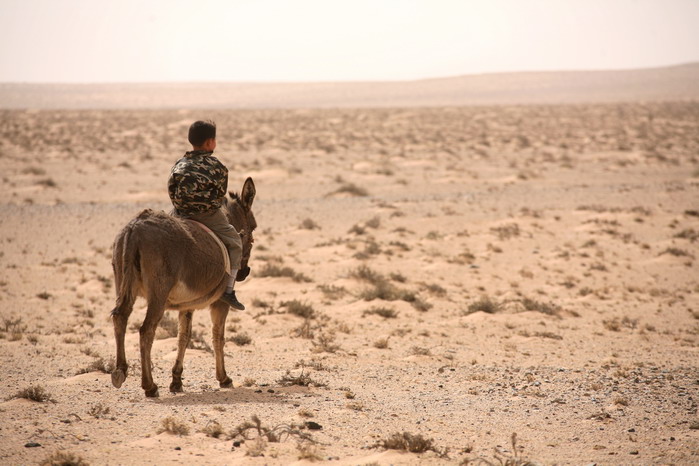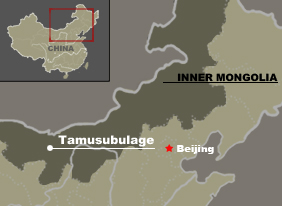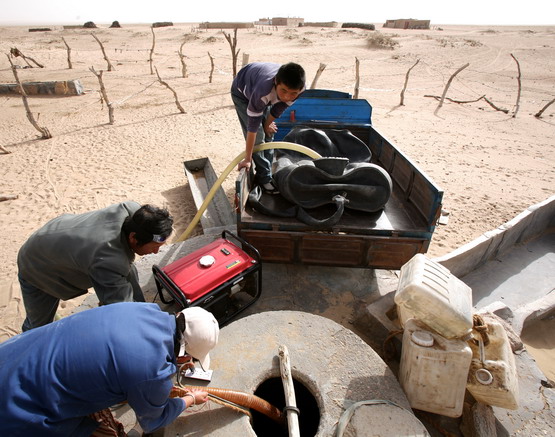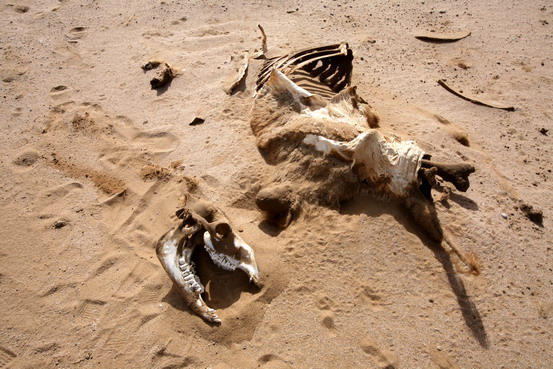
Accompanied by his donkey, a boy looks into the distance of his homeland.

Wearing a loose gown and traditional Mongolian boots, a shepherd herds his sheep on a horseback in the vast
This is the typical picture conjured by most Chinese when thinking of
Tamusubulage in the west, which means "spring of richness" in Mongolian, is just such a place. With plants thinly distributed and ubiquitous camel skeletons bared in the light brown sand, the views here betray the fecund connotation of its name.
Lying east to the
Alerted to the deteriorating ecological environment, the government launched a “Restoring Grassland” campaign in 2006, urging locals to quit herding and move to the neighboring town of

As the water level lowers, it takes a whole family’s teamwork to pump water from one well.

Camel skeletons litter the desert sands.
| 1 | 2 |
- 海尔结盟Nvidia 推“高清”新卖点 | 2008-01-25
- Songzhuang Land Rights Disputes Boil On | 2008-01-25
- NBA2008年全明星赛首发阵容公布 加内特领衔有姚无麦 | 2008-01-25
- Wang Yijiang: Don't Interfere with the Labor Market | 2008-01-24
- 中国铁建首发无悬念过会 将先A后H | 2008-01-24











